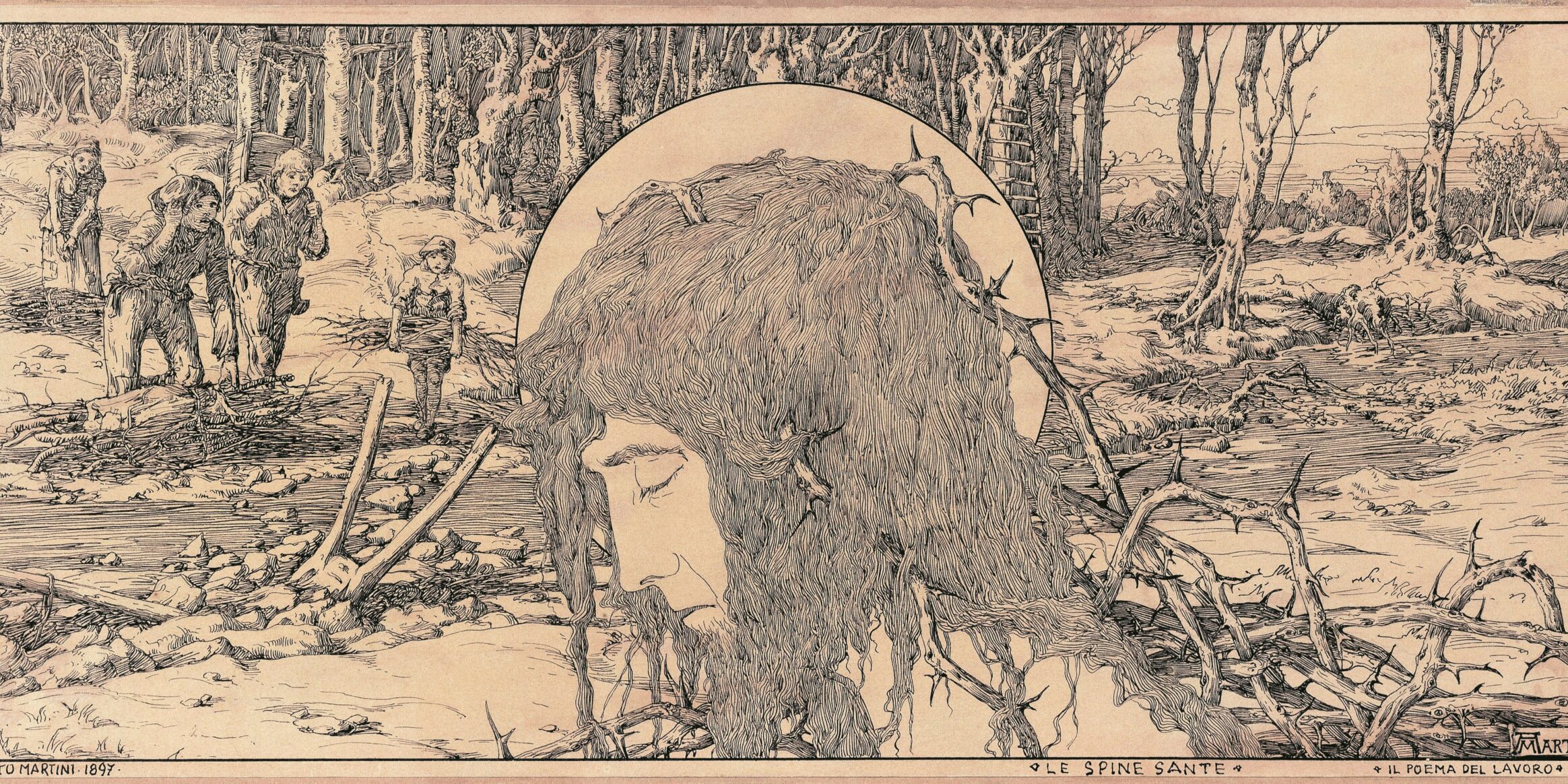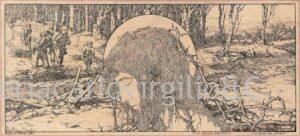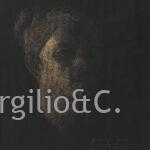| AVAILABLE

Alberto Martini
(Oderzo 1876-Milan 1954)
The Holy Thorns
1897
China pen on paper, affixed to paper support, 158 x 345 mm
Signed and dated lower right on title block: AMartini 97; signed, dated and inscribed on the support, lower left to right, in pen: “ALBERTO MARTINI. 1897. | LE SPINE SANTE | “IL POEMA DEL LAVORO”
On the back of the support, label: Società per le Belle Arti ed Esposizione Permanente, Milano, esposizione Alberto Martini
Alongside the series of drawings inspired by literary works, in his early years of activity, Martini also carried out illustrations with a freer and more autonomous content, focussed on social themes tied above all to working life in the fields. Initially defined by Martini with the title The Labourer’s Life (La vita del lavoratore), the graphic series of The Labour Poem (Poema del lavoro) engaged him between 1896 and 1898. A period in which he was simultaneously involved in producing illustrations to accompany the text of The War of the Bucket by Alessandro Tassoni and also continuing his Court of Miracles (Corte dei miracoli) series, stylistically similar to the series in question. It was a period of great productivity for Martini, which translated in just a few years into a success that went beyond the confines of Italy, above all determined by the positive reception of these illustrations in the European exhibitive context. Certainly familiar with the idealistic and social debates going on in the final quarter of the century in Italy, Martini shows his labourers as from another time, sharing in a collective suffering, pervaded by a melancholy and nostalgic feeling towards their existence. The field labourers’ song at dusk is thus turned into a sombre celebration of the dying day, intended to ward off uncertainties and fears for the future. In The Holy Thorns, on the other hand, the woodsmen’s dedication and working sacrifice are ideally compared by Martini to the suffering of Christ, who breaks into the middle of the drawing like a redeeming and providential vision. A reference to Christian religiosity that returns in the work entitled The Apostle, in which the rendering of the figures is the closest to the contemporary works for The Court of Miracles. The three drawings, dated 1897, all belong to the same primordial nucleus of the series. A group of illustrations that Vittorio Pica, in 1904, recalled as belonging to the series “exhibited in 1898 in Turin and then in 1902 in Rome, […] now partly in Saint-Louis.”
Alessandro Botta
For further information, to buy or sell works by Martini Alberto (1876-1954) or to request free estimates and evaluations
mail info@carlovirgilio.co.uk
whatsapp +39 3382427650


